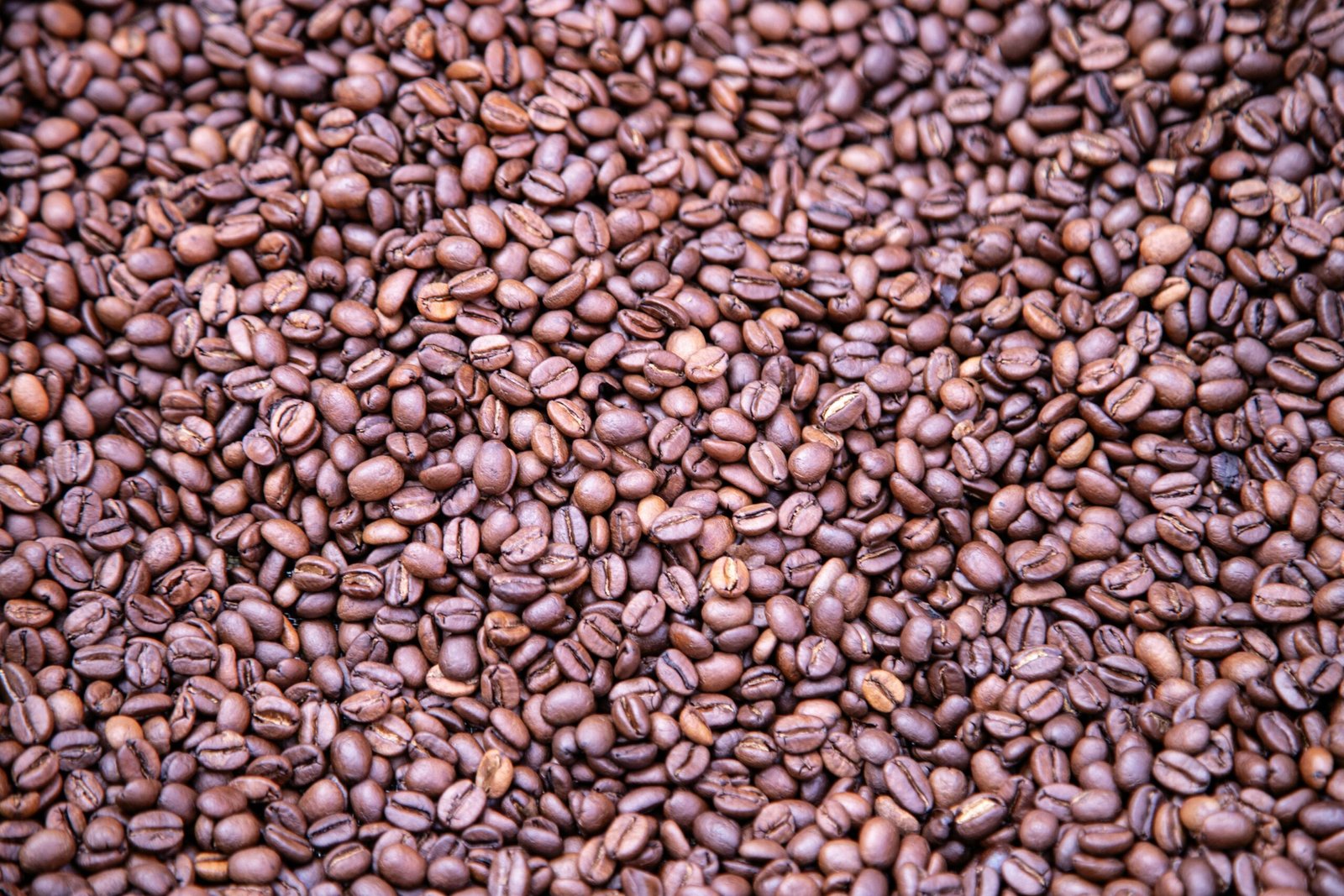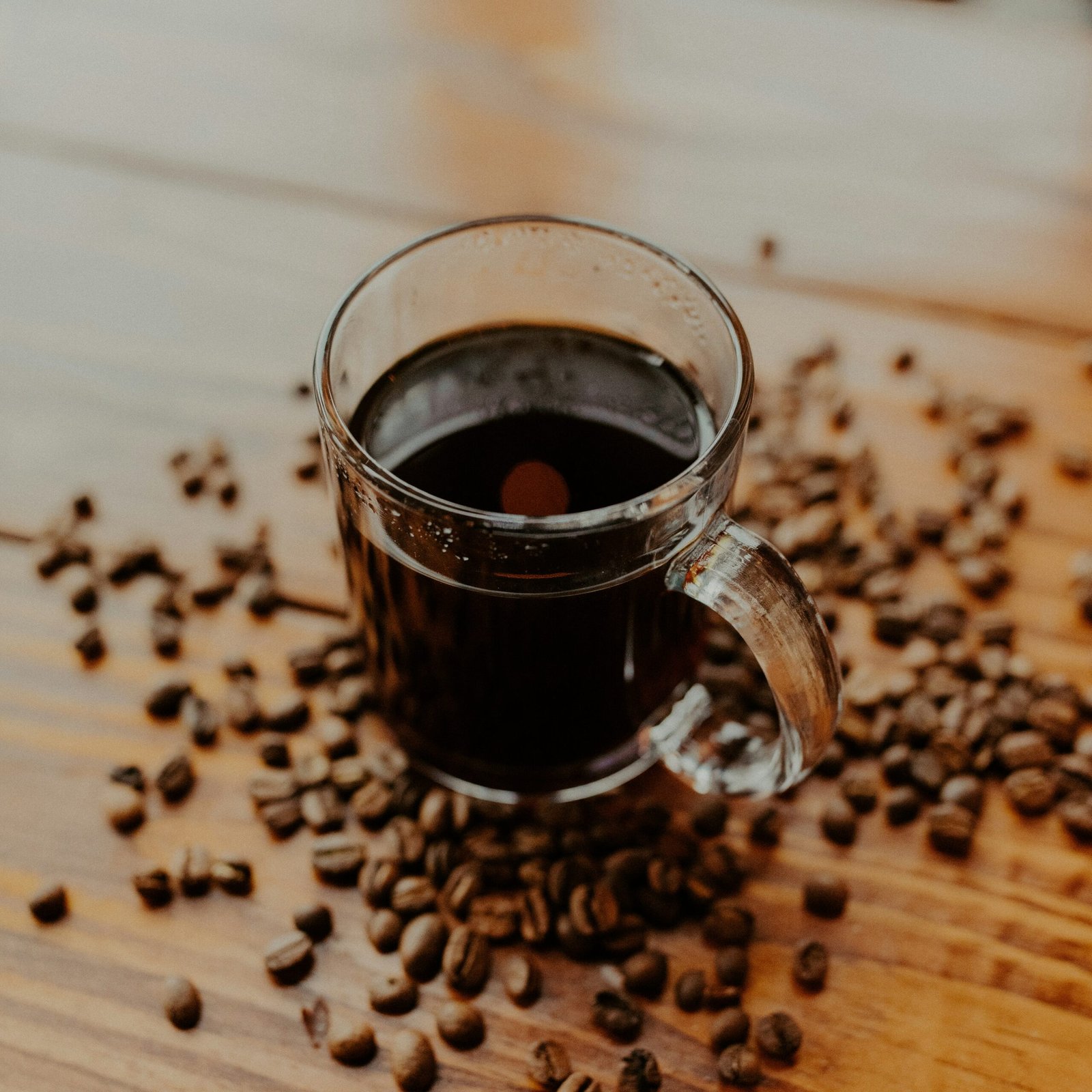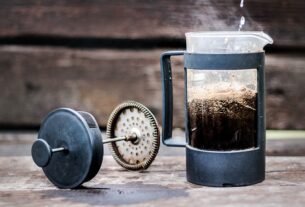Introduction to Espresso Beans
The art of crafting the perfect espresso begins with the careful selection of espresso beans. These beans are central to producing a brew with depth, intensity, and a rich aroma that distinguishes espresso from regular coffee. Historically, espresso beans trace their roots back to the early 20th century in Italy, where the invention of the espresso machine revolutionized coffee brewing. This innovation led to a focus on identifying the best coffee beans for espresso, which harnessed a specific blend, roast, and grind essential for creating a distinguished espresso shot.
Espresso beans are typically roasted darker than regular coffee beans to enhance their strong, robust flavor and to decrease acidity. While regular coffee beans can be used in drip coffee makers or French presses, espresso coffee beans are expertly crafted to withstand the high-pressure brewing method of an espresso machine. This method extracts the rich, concentrated brew known as espresso, where even minute variations in the beans’ characteristics can significantly impact the final cup.

One of the primary distinctions in the espresso vs coffee beans debate is the type of beans used. While both Arabica and Robusta beans are viable, a blend is often favored to balance the nuanced flavors of Arabica with the strong, crema-producing properties of Robusta. Additionally, the meticulous roasting process further distinguishes espresso beans, maximizing the intense flavor profile that aficionados seek.
Understanding how much caffeine in espresso beans can also influence the choice of beans. Due to their concentrated nature, espresso shots contain more caffeine per ounce compared to regular coffee, although an entire cup of coffee typically has more caffeine due to its larger volume. For those who prefer to eliminate caffeine but still enjoy the robust taste, decaf espresso beans provide an excellent alternative without compromising flavor.
Choosing the right espresso beans is crucial for those aiming to achieve a superior espresso experience. The right beans contribute significantly to the richness, flavor, and aroma of the espresso shot, making it crucial to select beans specifically tailored for this purpose. As we delve deeper into this guide, understanding espresso beans’ significance will serve as a foundation for better appreciating and mastering the art of espresso making.
Top 10 Espresso Beans for 2024: Reviews and Buying Guide
Choosing the best espresso beans can significantly impact the quality of your coffee experience. Whether you’re a seasoned barista or a home brewing enthusiast, understanding the nuances of espresso coffee beans can guide you to the perfect cup. Here, we provide an in-depth review of the top 10 espresso beans for 2024, considering their origin, flavor profile, price, and unique characteristics.
1. Lavazza Super Crema
 Origin: Brazil, India, and Colombia
Origin: Brazil, India, and Colombia
Flavor Profile: A harmonious blend offering a creamy, rich body with notes of hazelnut and brown sugar
Price: Bundle Price: $35.98 ($0.51 / Ounce)
Unique Features: Versatile with a smooth finish, ideal for both espresso and latte lovers.
2. Koffee Kult Dark Roast
Origin: Sumatra, Colombia, and Guatemala
Flavor Profile: Bold, rich flavors with hints of cinnamon and dark chocolate
Price: Amazon $54.99
Unique Features: Perfect for those who enjoy a robust and intense espresso.
3. Coffee Bros. Espresso Roast
Origin: Colombia and Ethiopia
Flavor Profile: Balanced and sweet with notes of strawberry, sugar cane, and vanilla
Price: $18 for 12 oz
Unique Features: Provides a smooth, balanced cup perfect for both traditional espresso and modern espresso drinks.
4. Death Wish Coffee
Origin: India and Peru
Flavor Profile: Earthy and intense with subtle notes of cherry and chocolate
Price: $20 for 16 oz
Unique Features: Renowned as the world’s strongest coffee with high caffeine content, ideal for those needing an extra kick.
5. Stumptown Hair Bender
Origin: Latin America, Africa, and Indonesia
Flavor Profile: Complex with bright citrus, milk chocolate, and caramel notes
Price: $15 for 12 oz
Unique Features: Popular for its adaptability; great for a variety of brewing methods.
6. Illy Classico
Origin: Mostly from Brazil, with beans sourced worldwide
Flavor Profile: Smooth and balanced with notes of caramel and chocolate
Price: $15 for 8.8 oz
Unique Features: Known for its consistent quality and smooth finish.
7. Blue Bottle Coffee’s Espresso Blend
Origin: Central and South America
Flavor Profile: A medium roast with notes of milk chocolate, praline, and dried cherry
Price: $18 for 12 oz
Unique Features: Freshly roasted and shipped, ensuring maximum flavor.
8. Peet’s Major Dickason’s Blend
Origin: Latin America and the Indo-Pacific
Flavor Profile: Rich, smooth, and complex with layers of spice, chocolate, and earthy notes
Price: $16 for 16 oz
Unique Features: A signature blend known for its full-bodied flavor and richness.
9. Lifeboost Espresso Beans
Origin: Nicaragua
Flavor Profile: Smooth, full-bodied, with hints of dark chocolate and fruit
Price: $30 for 12 oz
Unique Features: Organic, single-origin beans grown in shade without chemicals.
10. Volcanica Espresso Costa Rica
Origin: Costa Rica
Flavor Profile: Bold and bright with notes of chocolate, citrus, and honey
Price: $22 for 16 oz
Unique Features: High-altitude beans that provide a unique and flavorful espresso experience.
When selecting the best coffee beans for espresso, consider factors like flavor preferences, caffeine content, and brewing methods. This comprehensive guide on the top 10 espresso beans for 2024 offers a range of options to help you make an informed decision that suits your taste and coffee-making style. Whether you prefer the intense kick of Death Wish Coffee or the smooth, balanced profile of Illy Classico, there’s a perfect espresso bean for every coffee lover.
Single-Origin vs. Blend: Which Espresso Beans Are Right for You?
When selecting espresso beans, understanding the distinction between single-origin and blended beans is critical for achieving your preferred taste profile. Single-origin espresso beans originate from a specific region, farm, or even lot, providing unique flavors representative of their terroir. This unadulterated origin allows coffee enthusiasts to experience distinct taste notes emblematic of the geographical area, such as fruity highlands Ethiopian beans or chocolaty Brazilian beans. Single-origin beans are ideal for those who appreciate nuanced, complex flavors and wish to explore the diversity within the world of coffee.
On the other hand, blended espresso beans are a combination of beans sourced from different regions. The purpose of blending is to create a balanced and consistent taste by combining the strengths of various beans. This method typically ensures a well-rounded flavor profile, mitigating any extreme or undesirable characteristics of single-origin beans. Blends can range from complex, multi-layered profiles to straightforward and harmonious tastes, catering to a broad audience. Espresso enthusiasts who prefer a consistent and reliable experience often gravitate towards blends.
Choosing between single-origin and blended espresso beans ultimately depends on personal preferences and the desired coffee experience. Single-origin beans are perfect for those who savor the adventure of unique taste profiles and wish to delve into the specific characteristics each region offers. Meanwhile, blends are ideal for individuals seeking a balanced and consistent flavor or for café owners aiming to provide a dependable espresso shot to their customers.
Experts recommend trying both single-origin and blended beans to determine which aligns with your palate. Coffee professionals often suggest starting with blends to get accustomed to the baseline flavors before exploring the more distinctive profiles of single-origin beans. Whether you’re a novice or a seasoned connoisseur, understanding the merits of both options will enrich your espresso journey, allowing you to find the best espresso beans that suit your taste.
How Much Caffeine in Espresso Beans?
Understanding the caffeine content in espresso beans is crucial for both coffee aficionados and casual drinkers. Espresso beans, often misunderstood, do not inherently contain more caffeine than regular coffee beans. In fact, the caffeine content is influenced more by factors such as roasting levels and brewing methods rather than the type of bean itself.
In the realm of roasting, the level to which the coffee bean is roasted significantly affects its caffeine content. Lighter roasts typically retain more caffeine because caffeine is more stable during the roasting process. On the other hand, darker roasts, which are commonly used for espresso, may have slightly less caffeine due to the extended exposure to heat. However, the difference in caffeine content relative to the roast level is often minimal.
Moreover, the method of brewing plays an essential role in determining the caffeine level in your cup. Brewing methods like drip coffee and French press usually extract more caffeine per serving because of the longer brewing time and larger serving sizes. In contrast, an espresso shot, although small in volume, is highly concentrated and typically contains about 63 milligrams of caffeine per 1-ounce shot. This concentration can be more potent than a standard 8-ounce cup of drip coffee, which contains approximately 95 milligrams of caffeine.
When comparing espresso vs coffee beans, it is important to focus on how they are used and prepared rather than the beans themselves. The best coffee beans for espresso are selected to complement the intense, rich flavor profile unique to espresso, yet they do not inherently possess higher caffeine levels. For those seeking a caffeine-free option, decaf espresso beans offer a similar aromatic experience without the stimulant effects.
Overall, the caffeine content in espresso coffee beans remains a topic of interest and varies depending on several factors including roast intensity and the brewing process. By understanding these variables, coffee lovers can better tailor their choices to their preferences and caffeine tolerance.
Espresso Beans vs. Regular Coffee Beans: What’s the Difference?
Espresso beans and regular coffee beans may appear similar at a glance, but they diverge significantly in several key aspects. Understanding these differences will enable enthusiasts to select and utilize the best beans for their preferred brewing method.
The roasting process is a primary differentiator. Espresso beans are typically roasted longer and at higher temperatures. This extended roasting process results in a darker, oilier bean that delivers a rich, bold flavor profile. Conversely, regular coffee beans tend to be roasted for shorter durations and at lower temperatures, retaining a lighter, more vibrant taste.
Grind size is another crucial element. Espresso requires a fine grind, almost powdery, to ensure the water extracts the maximum flavor during the approximately 25-30 second brewing time. Regular coffee—brewed using methods such as drip-brewing, French press, or pour-over—necessitates a coarser grind. The varied grind sizes directly impact the extraction rate and overall brew quality. Thus, choosing the correct grind size for your method is essential for achieving the desired taste.
The intended brewing methods for espresso beans and regular coffee beans further highlight their differences. Espresso beans are specifically designed for use in espresso machines, where high pressure and steam facilitate the extraction of robust flavors. On the other hand, regular coffee beans are more versatile, suitable for a myriad of brewing techniques, each bringing out different taste nuances.
Many misconceptions persist regarding espresso versus regular coffee beans. One common myth is that espresso beans contain more caffeine than regular coffee beans. However, the caffeine content primarily depends on the type of coffee bean (Arabica vs. Robusta) and the brewing method, rather than the roast level. Generally, a single shot of espresso may have less caffeine than a cup of drip coffee due to the smaller serving size.
For coffee aficionados seeking the best coffee beans for espresso, it’s advisable to select beans labeled specifically for espresso use, guaranteeing optimal results. Conversely, those who enjoy a lighter brew can opt for beans suited to their preferred brewing method. Understanding these distinctions ensures a superior coffee experience, whether you are delving into the world of espresso or savoring a traditional cup of coffee.
How to Store Your Espresso Beans for Maximum Freshness
Ensuring the freshness and quality of your espresso beans is paramount for achieving the best possible flavor in every cup. Proper storage techniques play a crucial role in maintaining the vitality of these beans. Here are key tips on how to store your espresso beans for maximum freshness.
Firstly, the container in which you store your coffee beans is significant. For optimal preservation, it is advisable to use airtight containers made from materials that minimize light exposure. Opaque containers, ideally made from ceramic or non-reactive metal, can effectively protect your beans from light and air, which can degrade their quality. When it comes to selecting the best coffee beans for espresso, keeping them shielded from the elements is essential.
The environment in which you store your espresso beans also greatly impacts their freshness. Espresso beans should be kept in a cool, dark place away from heat sources and direct sunlight. Moisture is another enemy of coffee beans, so avoid storing them in locations that can become damp, such as near a sink or a window. Many experts recommend a storage temperature between 60-70°F (15-21°C) to maintain the optimal condition of the beans.
It’s also essential to avoid common mistakes that can compromise the quality of your beans. For instance, storing your espresso beans in the refrigerator or freezer can expose them to moisture and other odors, which might alter the flavor profile. While refrigeration can be tempting, the frequent temperature changes can cause condensation, leading to stale beans. It’s better to buy fresh beans in smaller quantities that you can consume within a week or two.
Freshness directly impacts the flavor and quality of espresso. Freshly roasted beans retain volatile oils and aromatics that contribute to the complex flavors and aromas of espresso. Once these beans are exposed to air, they begin to oxidize and lose their freshness, negatively affecting the resulting coffee. Therefore, following these storage techniques will ensure your espresso beans remain in prime condition, providing you with a consistently rich and flavorful espresso experience.
Brewing Techniques for the Perfect Espresso
Mastering the art of brewing the perfect espresso begins with an understanding of the essential elements that influence the final shot. Whether you’re a novice or an experienced home barista, fine-tuning grind size, tamping pressure, water temperature, and extraction time are crucial for unlocking the full potential of your espresso beans.
The journey starts with grinding your espresso beans. Aim for a fine, consistent grind; if the grind is too coarse, the water will pass through too quickly, resulting in a weak shot. Conversely, an overly fine grind can lead to over-extraction and bitterness. Experiment with your grinder settings until you find the sweet spot that delivers both richness and balance.
Tamping involves pressing the ground it beans into the portafilter to create an even surface. Use approximately 30 pounds of pressure, ensuring a level tamp to promote uniform extraction. An uneven tamp can cause channeling, where water flows through faster in some areas than others, leading to inconsistent flavors.
Equally important is the water temperature, which ideally should be between 195 to 205 degrees Fahrenheit. Water that’s too hot can burn the espresso, while water that’s too cold results in under-extraction. Many high-quality espresso machines allow you to control the temperature, providing greater precision.
Understanding the extraction time is crucial as well. The optimal time for a shot generally ranges from 25 to 30 seconds. Too fast may indicate a coarse grind or insufficient tamping, leaving your espresso under-extracted. On the other hand, a slow shot suggests a grind that’s too fine or excessive tamping, culminating in over-extraction.
Adjusting one variable at a time can help pinpoint what needs correction. Whether you’re using decaf espresso beans or the best coffee beans for espresso, these techniques and tweaks will enhance your brewing skills, enabling you to achieve that elusive perfect espresso shot consistently.
Sustainable and Ethical Espresso Bean Sourcing
As the demand for high-quality espresso beans continues to grow, so does the importance of sustainable and ethical sourcing. When selecting the best coffee beans for espresso, it is essential to consider how they are harvested and the conditions under which the farmers work. Ethical sourcing not only ensures that farmers are fairly compensated for their labor, but also fosters environmentally-friendly practices that protect the ecosystem.
One way to determine the ethical sourcing of espresso coffee beans is to look for certification labels. Among the most notable are the Fair Trade, Rainforest Alliance, and UTZ Certified labels. Fair Trade certification, for instance, ensures that small-scale farmers receive fair prices and support for community development. Meanwhile, Rainforest Alliance and UTZ certifications focus on promoting biodiversity, reducing pesticides, and enhancing the livelihoods of farmers.
Several brands have emerged as leaders in the realm of sustainable and ethical espresso bean sourcing. Companies such as Stumptown Coffee Roasters and Blue Bottle Coffee have dedicated substantial efforts towards establishing transparent and fair supply chains. Additionally, they often work directly with farmers to ensure the quality of their decaf espresso beans while maintaining ethical standards. Such direct trade relationships not only guarantee the welfare of the farmers but also contribute to the production of superior it.
The impact of sustainable and ethical sourcing extends beyond the individual farmers; it plays a significant role in preserving environmental resources. Sustainable farming practices, such as shade-grown coffee and organic farming, help maintain natural habitats, conserve water, and reduce carbon footprints. By prioritizing such practices, the coffee industry can mitigate adverse environmental effects while ensuring the longevity of coffee cultivation.
In conclusion, choosing sustainable and ethically sourced it is essential for both quality and responsible consumption. By supporting brands and certifications dedicated to these principles, consumers can enjoy their espresso with the assurance that their choices contribute positively to society and the environment. Working in harmony with farmers and ecosystems will help preserve the richness and diversity of espresso coffee beans for future generations.




